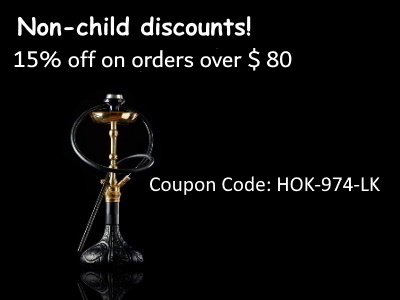Pharmacological properties
Pharmacodynamics. during wide-ranging pharmacological studies and conducting tests on the person in comparison with other gks at test on a blanching test according to Mackenzie and Wells at a klobetazol of propionate the strong vasoconstrictive action in comparison with such active ingredients as fluotsinolon, diflukortolon, betamethasone, Triamcinolonum which is comparable to the theoretical assumptions was revealed.
Anti-inflammatory efficiency of a klobetazol of propionate was estimated by conducting tests on a pyrectic erythema, tests by crotonic oil / kerosene and a poisonous ivy. During such researches in comparison with reference medicaments — betamethasone valerate, a diflukortona valerate, a fluotsinolona acetonide and Triamcinolonum acetonide — the effect corresponded to the theoretical assumptions.
Anti-proliferative action of a klobetazol of propionate (for example when conducting tests on psoriasis plaques) wasmore expressed, than at a fluotsinolon of acetonide, betamethasone of valerate and a diflukorton of valerate.
In a qualitative sense the mechanism of anti-inflammatory, anti-proliferative and immunomodulatory action for all GKS — it agrees to the standard, partially incomplete and hypothetical representations — schematically, in the simplified form, it is possible to provide as follows: molecules GKS form complexes in plasma with kortikoidny receptors of cells — contact separate genes of gormonresponsivny elements. It induces a transcription of the specific m-RNA-molecules participating in synthesis of lipokortin-proteins on ribosomes. Lipokortina slow down the reactions arising in case of physical, chemical, toxic or immunogene impact or action of a microbiological pathogenic factor, which are carried out between a phospholipase And 2 and phospholipids and providing release of arachidonic acid. The delay or delay of process of release of arachidonic acid normalizes, reduces or blocks the synthesis regulated by metabolism of arachidonic acid with COG and a lipoxygenase and also release of prostaglandins, prostacyclins, leukotrienes, a factor of activation of thrombocytes and thromboxanes which as inflammatory mediators influence, for example, vessels, cell membranes, leukocytes macrophages, their chemotaxis and migration, regulate increase in quantity of cells. In addition, GKS have antimitotic effect and slow down synthesis of nucleic acid and a protein. Essential factors of their immunomodulatory and antiallergic action is interaction of glucocorticoids with V-cells, T-cells and Langergans's cells that slows down advance of antigens, their antagonistic action on synthesis and functions of interleukin 1, 2 and other tsitokinin.
Pharmacokinetics. It is easily absorbed through skin. It biotransformirutsya mainly in a liver. It is removed with bile or through a large intestine. The general index of removal of a klobetazol of propionate makes 72 h, about 70% of the general dose. Klobetazol propionate is partially metabolized by oxygenating to 11-ketoderivative.
Indication
Psoriasis (except for widespread blyashechny psoriasis), persistent eczemas, red flat deprive, a diskoidny lupus erythematosus and other diseases of skin which do not respond to treatment by less active gks.
Use
toKarizon ointment, karizon fat ointment, karizon cream it is necessary to put 1 time a day with a thin layer. the total area of drawing should not exceed 20% of all body surface. the course of treatment makes no more than 2-3 weeks
Karizon solution it is necessary to put 1 time a day with a thin layer. The total area of drawing should not exceed 20% of all body surface. Solution is produced in bottles with a nozzle doser that provides its direct drawing on affected areas and allows to avoid plentiful wetting of hair. The course of treatment makes no more than 2-3 weeks.
Contraindication
Pink eels (rozatsea), eels (acne) and perioral dermatitis; perianal and genital itching; the damages of skin caused by viruses (virus of a herpes simplex, chicken pox); hypersensitivity to medicament components; the injuries of skin which are initially infected with fungi or bacteria; a dermatosis at children aged till 1 year, including a diaper dermatitis and other dermatitis; reaction to inoculations; i pregnancy trimester.
Side effects
Data on side effects which are given below, classified by bodies and systems and frequency of emergence. on the frequency of emergence are divided into the following categories: very often (≥1/10), it is frequent (≥1/100 and ≤1/10), infrequently (≥1/1,000 and ≤1/100), is rare (≥1/10,000 and ≤1/1,000), is very rare (1/10,000), including isolated cases.
Immune system: very seldom — hypersensitivity. Local hypersensitivity reactions, such as erythema, rash, itching, urticaria, local burning of skin and allergic contact dermatitis, can arise in sites of application and to be similar to symptoms for which treatment medicament was appointed.
If signs of hypersensitivity arise, use of medicament needs to be stopped urgently.
Endocrine system: very seldom — signs of a hypercorticoidism. As well as at use of other topical GKS, or drawing on big sites can lead prolonged use in a large number to emergence of signs of a hypercorticoidism owing to considerable system absorption. Such cases are most probable at babies and children and also when using an occlusive bandage. At babies of a diaper work as an occlusive bandage.
Provided that the week dose of medicament at adults does not exceed 50 g, any oppression of a hypophysis or adrenal glands will be temporary, with fast return to the normal state as soon as the short course of steroid therapy is stopped.
Vascular system: infrequently — expansion of superficial blood vessels.
Skin and hypodermic fabrics: infrequently — a local atrophy, atrophic strips on skin; very seldom — thinning of skin, pigmentation change, a hypertrichosis, aggravation of the main symptoms, a pustulous form of psoriasis.
Long-term and intensive treatment by highly active GKS can cause atrophic changes, such as atrophic strips on skin and thinning of skin, especially during the using of hermetic bandages or rubbing in of medicament in skin folds.
In rare instances treatment of psoriasis of GKS (or its termination) can provoke a pustulous form of a disease.
Special instructions
not to apply medicament to face skin, intertriginozny sites (area of axillary hollows and genitalias), to the erosive and becoming wet surfaces of skin, a graze and an ulceration. at appearance of infectious infection the topical treatment with glucocorticoid medicaments should be stopped. not to use this medicament under occlusive bandages. for safety for health of the patient the quantity of the karizon applied in any form of release should not exceed 50 g/week prolonged and regular use of a klobetazol of propionate has to be carried out under observation of the doctor.
not to apply tomedicament on sites of skin around eyes. Not to apply to patients of advanced age medicament on big sites of skin. In case of the missed putting medicament next time the dose should not be doubled.
In addition to Karizon fat ointment, to Karizon ointment, to Karizon cream. At use of medicament in genitals and an anus and simultaneous use of latex condoms decrease in degree of their efficiency takes place.
Karizon cream. Cetyl stearyl alcohol and polysorbate 80 can cause limited skin reactions of local character (for example contact dermatitis).
Karizon fat ointment. Propylene glycol can cause irritation of skin.
Karizon ointment. Polysorbate 80 and stearyl alcohol can cause limited skin reactions of local character (for example contact dermatitis).
Karizon solution easily ignites. Irritates a mucous membrane of eyes. Steam inhalation of medicament can cause drowsiness and misting of consciousness therefore it is necessary to avoid hit of medicament in airways.
Use during pregnancy and feeding by a breast. In the I trimester of pregnancy the use of medicament is contraindicated. In the subsequent 2 trimesters of pregnancy medicament is used only in case the expected advantage for mother exceeds potential risk for a fruit. Not to apply medicament on big sites of skin.
feeding Period breast. Safety of use of a klobetazol of propionate during feeding by a breast is not established.
Children. Drug is contraindicated for treatment of a dermatosis at children aged till 1 year, including dermatitis and diaper rash.
Ability to influence speed of response at control of vehicles or work with other mechanisms. Does not influence.
byInteraction
Interactions karizona with other medicines it is still not revealed, however this opportunity is not excluded concerning such medicaments as, for example, diuretics and anticoagulants and also under unfavorable therapeutic and rezorbtsionny conditions (for example at strongly injured skin).
OverdoseProbability of emergence of acute overdose is very insignificant
. in case of chronic overdose or the wrong use there can be signs of a hypercorticoidism demanding reduction or gradual phase-out local gks which needs to be seen off under medical observation, considering risk of emergence of insufficiency of adrenal glands. Storage conditions
At a temperature not above 25 °C.
| Characteristics | |
| Active ingredients | Klobetazol |
| Amount of active ingredient | 0.5 mg/g |
| Applicant | Mibe |
| Code of automatic telephone exchange | D07AD01 Klobetazol |
| Interaction with food | It doesn't matter |
| Light sensitivity | Not sensitive |
| Market status | The branded generic |
| Origin | Chemical |
| Prescription status | According to the prescription |
| Primary packing | tuba |
| Producer | IIB OF GMBH ARTSNAYMITTEL |
| Quantity in packing | 15 g |
| Release form | external use cream |
| Route of administration | External |
| Sign | Import |
| Storage temperature | from 5 °C to 25 °C |
| Trade name | Karizon |
Karizon cream 0.5mg/1g of a tube of 15 g
- Product Code: 182728
- In Stock
- Ready to ship
-
$21.03
































 This product is bought 43 people.
This product is bought 43 people.